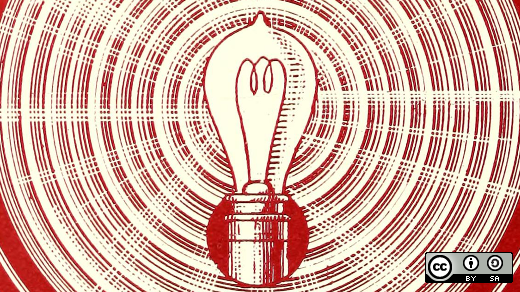For the past several years, Design Thinking has been providing a way to enhance problem solving within teams, to ensure learning goals are met, and to increase team engagement. In our previous article, we discussed how we used movie posters to "pitch" our projects to stakeholders. In this article, we're going to review the many lessons we've learned from Design Thinking.
The box office reviews
"If you love what you do, then you’ll never work a day in your life" was the angle we were going for when we decided to break our self-imposed ceiling of needing to be formal and business-like to be able to both plan and deliver work. Our planning team was loving the reaction and engagement we were getting from our stakeholders and wider team from using the movie posters instead of documents. It was at this point that we began to realize how we created this arduous and quite frankly boring way of planning our team's work. We had imposed requirements on ourselves of needing to write up documents, transpose that information into a spreadsheet, and then (yes, a third time) into a slide deck. Product owners and planning teams have to do this four times a year, and the cycle was starting to feel heavy and burdensome to us.
It's crucial for a product owner or a manager (or whoever is planning a development team's work) to present information about what their team could potentially deliver to stakeholders so that the best decision on where to invest time and resources can be made. But that information had begun to feel like it was just text on a page or screen. Stakeholders weren't really buying into what our planning team was half-heartedly selling. If we didn't enjoy talking about our projects, how could we expect our stakeholders to enjoy discussing them? Our project planning team quickly realized we not only needed to introduce the movie posters for the wider teams' and stakeholders' best interests, but for our own sense of enjoyment in our roles, too. We needed to Kill Bill.
So with Uma Thurman leading the way in our new concept of using movie posters as cover stories, we found ourselves getting excited about creating new ones for each project request. We were going into each call looking forward to the few moments when the movie posters were unveiled, and those on the calls got a laugh about what was chosen. If they hadn't seen a particular movie before, they often shared that, which resulted in a side conversation where people shared movie trivia and began getting to know each other better. All of this from a software project brief in the style of a Kill Bill Vol. 2 movie poster. It was incredible to watch the interactions happen and relationships form. The conversations in those calls were freeform, unreserved, and extremely valuable to our planning team. Movie posters got everyone talking, which made it easier for participants on the call to ask for more detail about the project, too.
Our new and improved planning calls were a "box office smash" and the results spoke for themselves. Our quarterly planning calls went from being 90 plus minutes to under 45 minutes, with both team and stakeholders commenting on how included they felt in the decision making process. A lot of this came from developing and expanding on the requirements and insight gathering sessions we'd conducted in the run up to our quarterly planning calls. This was the last remnant of our formal, stiff approach but there was no denying how useful the information gained from those sessions could be to our projects. So we kept it simple again, and started to introduce the movie posters during what we coined the "insight sessions" instead. Our insight sessions were making a big difference by providing space for people to meet and converse about technical details, potential blockers, risks, and opportunities to leverage one piece of technology against another. This was all happening naturally. The ice had been broken with a reveal of a Ghostbusters poster or A Bugs Life. People turned on cameras and mics to get involved in the conversation about whether they had seen the movies, the remakes, or the original. It became easy for our planning team to guide the already flowing conversations back to the work at hand.
That's a wrap
We were now delivering valuable, enjoyable, and important calls that were generating a lot of success for our team. Our project delivery success rate hit, and stayed at, 100%. We have never, for three years now, had to halt or drop a project once it's been actioned from quarterly planning. We attribute the high engagement levels on our calls, and we believe people are engaged because our calls are novel and fun while still being informative. We're capturing crucial information about each project before it even begins development, so our teams are able to hit the ground running.
Yes, planning needs to be considered and measured and thorough, but it's to no one's benefit when only one person is doing the thinking, talking, and measuring. It's important to create a culture of open communication and trust for product owners and project managers, so that they can plan work for their teams and bring real value to their stakeholders and end users. It's even more critical for development teams to have the space and tools to plan openly and collaboratively, both with each other and with adjacent teams.
You need the freedom to express your opinion at work. Why should planning processes try to box us into silos and acquiescence? That's a quick way to lose friends and gain robots.
Our team is of the firm belief that people deliver projects. We made some changes when we realized that we needed people, with all of their personalities and perspectives, to see what each project meant to them. Then we could determine which ones to work on. We needed the heart and spirit of Agile methodologies in a process that was open, collaborative, and fun for everyone.
This way of planning and working together is based on using visuals, and trying to enjoy the work we do and the time we spend together at work. It's a means to promote discussion and move those in planning roles from drivers to facilitators so that a unanimous decision can be reached through shared understanding of the work, and the potential trade-offs that comes with it. We chose movie posters, but the concept can be expanded to just about anything! This is our whole point. You don't have to limit your creativity to plan work. If you like music, make an album! Comics? Design one! Or maybe TV shows are more your speed. Take your pick, my friend—it's your cover story. Tell it in the way you enjoy the most, and enjoy not only the informative projects you will generate for your team, but also the sense of camaraderie everyone will feel from having the freedom and safety to grab a coffee or tea, join a call, and talk amongst friends about movies and technology.












Comments are closed.